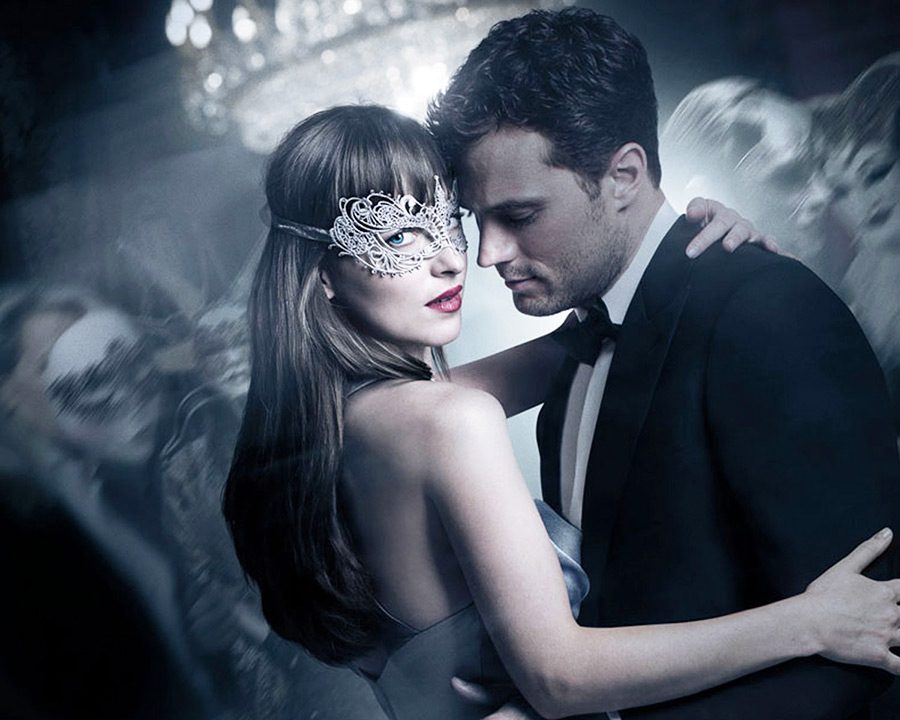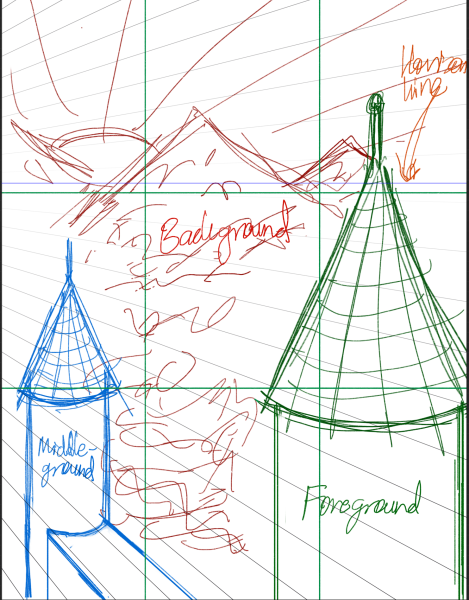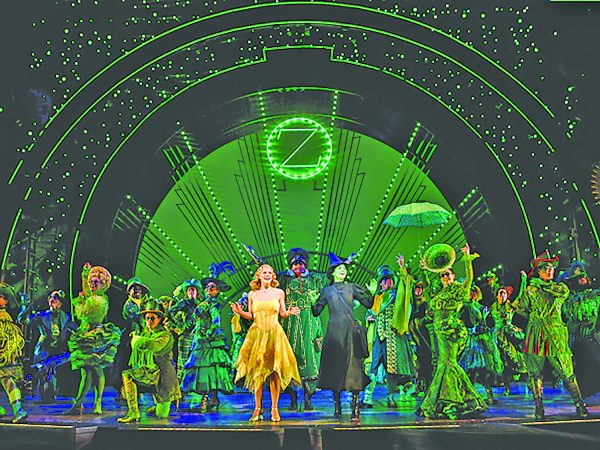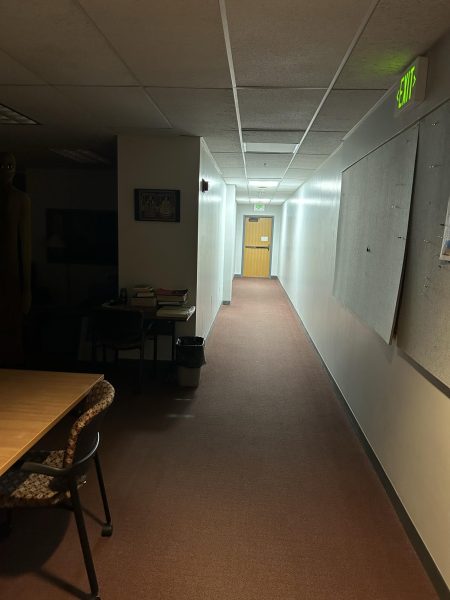“Fifty Shades Freed” is gratuitously vanilla
On Feb. 9, director James Foley launched a full-scale shitzkrieg on American movie theatres, though he stopped short of calling it that and instead stuck with the name of the book he was adapting: “Fifty Shades Freed.” The film is the third and (thankfully) final in a series that started with such promise, only to end in a smoldering pile of wreckage, the likes of which hasn’t been seen since the docking of the Hindenburg.
For those who are blissfully unaware, “Fifty Shades” was originally a book trilogy that made a name for itself with steamy BDSM scenes that dominate the series. The story focuses on a naïve college virgin named Anastasia Steele who becomes quite taken with 20-something bajillionaire Christian Grey. As it turns out, Christian doesn’t really do “conventional” relationships, and if Ana wants a piece then she’ll have to “submit” to his rules.
She eventually agrees to sign a contract agreeing to be his sexual submissive after a fair amount emotional manipulation via lavish dinners, helicopter rides, a new car and laptop, and even a bit of stalking in the Deep South. She unconvincingly rebels and, in the second installment, finally breaks through his tough exterior to discover the emotionally conflicted manboy underneath. Groundbreaking new territory for a romantic thriller.
Ana ultimately succeeds in luring Christian into a more domesticated lifestyle, garnering a wedding proposal, but the effort isn’t without its complications. Ana insists on maintaining her career in a Seattle publishing house, but is sexually assaulted by her boss Hyde the minute she’s alone in his office. Christian proceeds to buy the publishing house’s parent company, and pulls the strings to get Hyde fired. In retaliation, Hyde sabotages Christian’s helicopter, causing it to crash in the mountains for the grand finale of the second film.
All of this takes us to the beginning of “Fifty Shades Freed.”
The most disappointing aspect of the second and third movies in the series is the increasingly sparse and vanilla sex scenes. Though it seems like an immature reason to not like a film, bondage is what set the “Fifty Shades” series apart from other love stories.
Through no fault of my own, I’ve seen each of the three films on the day they came out, and my biggest gripe with the second was the notable lack of kinky sex. Christian does, after all, have a red velvet-walled room of pain loaded with every kind of whip, flog and restraint you could imagine.
This change in sexual prevalence can be explained by the change in director. The first movie is directed by Sam Taylor-Johnson, a woman from south London whose career focused more on fine art than sexual deviancy. She stepped away from the series after disagreements with the books’ author, E.L. James, and even regretted her involvement with the first film.
Cue James Foley. Foley’s most notable work was his direction of “Glengarry Glen Ross,” but I’ll attribute that to David Mamet’s script and top-notch performances by Al Pacino and Jack Lemmon, rather than Foley’s directional prowess.
Foley’s visions of “Fifty Shades Darker” and “Fifty Shades Freed” were decidedly unimaginative. It was as though he took the most clichéd parts of every other love story ever and strung them together with a soundtrack that could be rivaled only by a 95 Triple X playlist, which not-so-ironically shares many of the same songs.
“Freed” starts out with a gratuitous wedding montage, culminating with Christian whisking his virgin-turned-submissive-turned-bride away to Paris (who would’ve guessed). Foley graces us with another montage here, showing the pair biking under L’Arc de Triomphe, canoodling in front of the Louvre and attending the opera. We even get a nice shot of some under-the-covers missionary that would almost make Mike Pence blush.
Unfortunately for Christian and Ana, their honeymoon is cut short when an explosive is set off in a server room at one of Christian’s companies. If you were wondering what kind of nefarious villain could pull off such a stunt, fear not. He is immediately identified as none other than Hyde, Ana’s former boss. Please hold your collective gasps.
Ana returns to work to find that her office has been completely redone and that she was promoted to Senior Fiction Editor. This was a surprising bit of news, not only because most people don’t get promoted while they’re on a several-week vacation, but also because Ana was already promoted to Senior Fiction Editor in the second film, following Hyde’s sacking. Even then, her merit for the promotion was tenuous at best since, you know, she was a 21-year-old assistant fresh out of college.
Lack of merit notwithstanding, she doesn’t appear to do much work in her time at the office anyway. There isn’t a moment in the entire series, never mind this film, when she’s in the office and Christian doesn’t burst in to either yell at her or take her away on some vacation. At one point, she does manage to tell her staff to change some font size and daydream about Christian’s supply of butt plugs.
Ana’s transformation in “Freed” is more than slightly confusing. Throughout the movie she’s completely flabbergasted by seemingly obvious things, i.e. “Wow, you own this jet?”, “Why would Hyde do such a thing?”, “What are those handcuffs for?” and “How am I pregnant? I only missed my birth control shot by two months!”
Despite her being seemingly unaware of anything that’s happened to her throughout the series, there are several scenes in “Freed” where her self-assertion is staggering. When challenged by an attractive architect making eyes at Christian, Ana scares her off with a stern scolding, after which Christian lets her drive his flashy sports car. This, of course, leads to a hot pursuit where Ana somehow morphs into a seasoned getaway driver similar to Vin Diesel in “XXX” or “Fast and the Furious.”
Ana’s transformation, however surprising, pales in comparison to Hyde’s. It’s baffling how a man who’s known nothing but fiction editing his whole life suddenly jumps into a career as a criminal mastermind. He breaks into Christian’s high security facility to hack into the computer systems, sneaks by Ana and Christian’s 24-hour security to break into their home and attempt to kidnap Ana, and orchestrates the kidnapping and ransom of Christian’s sister.
If anything, “Fifty Shades Freed” is overwhelming proof that hot, young actors surrounded by glitz and glam don’t make for a good film. Although the visuals soften the blow of elementary dialogue and a cheesy storyline, it falls far short of something entertaining enough to keep me awake.
To paraphrase Dave Chappelle’s Rick James, “I wish I had more hands . . . so I could give this movie four thumbs down.”






